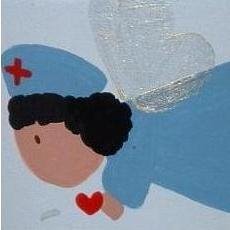1. A new mother has some questions about (PKU). Which of the following statements made by a nurse is not correct regarding PKU?
A: A Guthrie test can check the necessary lab values.
B: The urine has a high concentration of phenylpyruvic acid
C: Mental deficits are often present with PKU.
D: The effects of PKU are reversible.
2. A patient has taken an overdose of aspirin. Which of the following should a nurse most closely monitor for during acute management of this patient?
A: Onset of pulmonary edema
B: Metabolic alkalosis
C: Respiratory alkalosis
D: Parkinson’s disease type symptoms
3. A fifty-year-old blind and deaf patient has been admitted to your floor. As the charge nurse your primary responsibility for this patient is?
A: Let others know about the patient’s deficits.
B: Communicate with your supervisor your patient safety concerns.
C: Continuously update the patient on the social environment.
D: Provide a secure environment for the patient.
4. A patient is getting discharged from a SNF facility. The patient has a history of severe COPD and PVD. The patient is primarily concerned about their ability to breath easily. Which of the following would be the best instruction for this patient?
A: Deep breathing techniques to increase O2 levels.
B: Cough regularly and deeply to clear airway passages.
C: Cough following bronchodilator utilization
D: Decrease CO2 levels by increase oxygen take output during meals.
5. A nurse is caring for an infant that has recently been diagnosed with a congenital heart defect. Which of the following clinical signs would most likely be present?
A: Slow pulse rate
B: Weight gain
C: Decreased systolic pressure
D: Irregular WBC lab values
6. A mother has recently been informed that her child has Down’s syndrome. You will be assigned to care for the child at shift change. Which of the following characteristics is not associated with Down’s syndrome?
A: Simian crease
B: Brachycephaly
C: Oily skin
D: Hypotonicity
7. A patient has recently experienced a (MI) within the last 4 hours. Which of the following medications would most like be administered?
A: Streptokinase
B: Atropine
C: Acetaminophen
D: Coumadin
8. A patient asks a nurse, “My doctor recommended I increase my intake of folic acid. What type of foods contain the highest concentration of folic acids?”
A: Green vegetables and liver
B: Yellow vegetables and red meat
C: Carrots
D: Milk
9. A nurse is putting together a presentation on meningitis. Which of the following microorganisms has noted been linked to meningitis in humans?
A: S. pneumonia
B: H. influenza
C: N. meningitis
D: Cl. difficile
10. A nurse is administering blood to a patient who has a low hemoglobin count. The patient asks how long to RBC’s last in my body? The correct response is.
A: The life span of RBC is 45 days.
B: The life span of RBC is 60 days.
C: The life span of RBC is 90 days.
D: The life span of RBC is 120 days.
Answer Key
1. (D) The effects of PKU stay with the infant throughout their life.
2. (D) Aspirin overdose can lead to metabolic acidosis and cause pulmonary edema development.
3. (D) This patient’s safety is your primary concern.
4. (C) The bronchodilator will allow a more productive cough.
5. (B) Weight gain is associated with CHF and congenital heart deficits.
6. (C) The skin would be dry and not oily.
7. (A) Streptokinase is a clot busting drug and the best choice in this situation.
8. (A) Green vegetables and liver are a great source of folic acid.
9. (D) Cl. difficile has not been linked to meningitis.
10. (D) RBC’s last for 120 days in the body.










2 comments:
Hello there! I'm just new in this blogspot. I'm glad that more and more pinoy nurses blogspot are coming in. It is really helpful especially to us reviewing for local and Nclex exams. Thank you so much for your unselfish time and effort in creating this web. I really like your web, your font in the exam tests are big w/c is easy to read and it is well edited. I hope you could feature more local test exams as I review for this Dec '07 board. This is my 3rd take actually. Please help.
More power to pinoy nurses zone creators.
Best regards,
Andrew
hi andrew, i'm glad u found my site helpful on ur review for nle and nclex.. I will try my best to update the content of my site. Your message inspire me to put on more review materials. I thought people are not interested anymore to check out my site.. Anyhow, it is my pleasure to provide review materials for each aspiring nurses out there.. Btw, study hard and pray harder.. u can download some review materials on my download link also..
tnx again and Godbless!
-weng Ü
Post a Comment